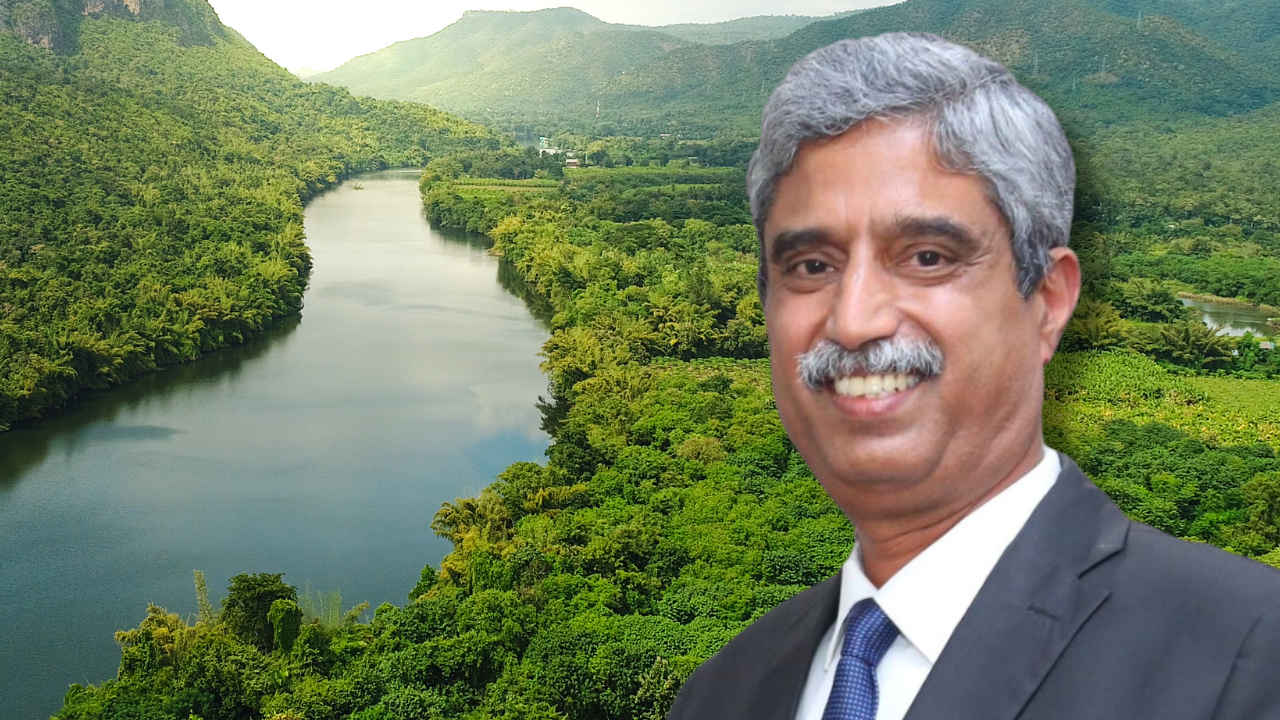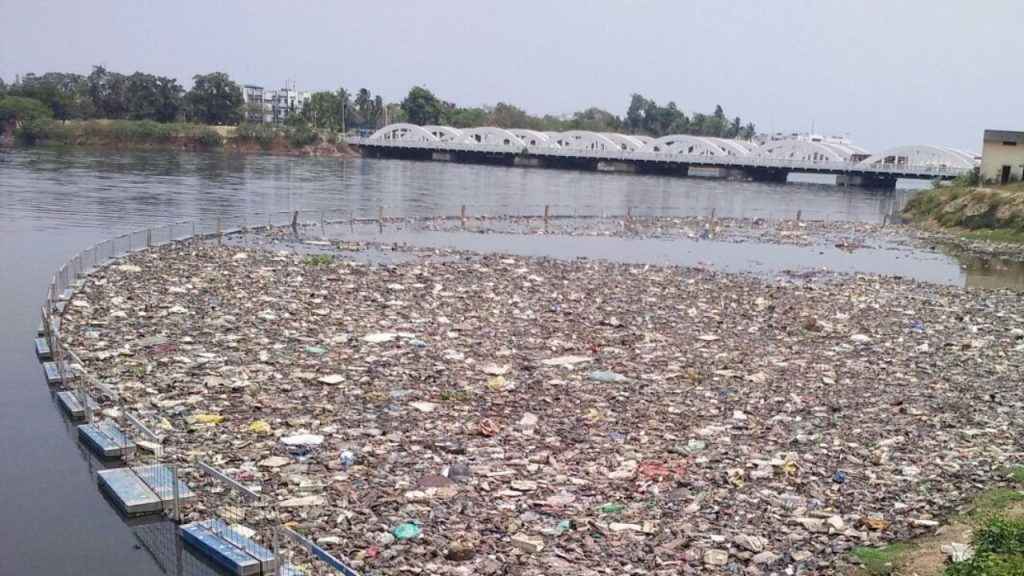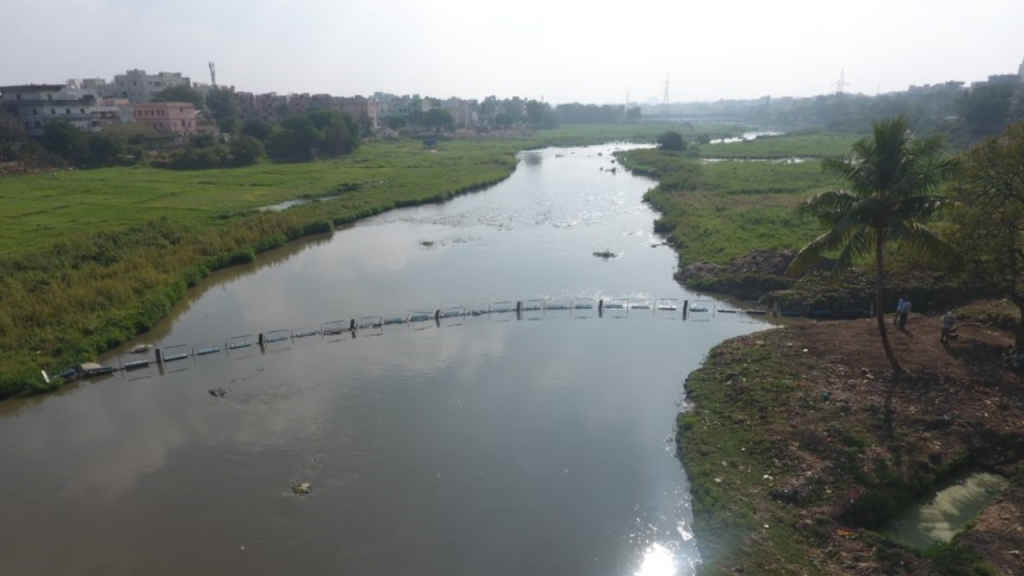Meet AlphaMERS: India’s river cleaning tech expert

Capt. D.C. Sekhar is an ex-merchant Navy captain and alumni of IIM Bangalore. Founder of AlphaMERS, Sekhar and his team has developed solutions for river clean up, harvesting ocean wave energy, maritime perimeter security systems, besides robots for crude oil industry in a separate start up. In an email interview, he threw light on some of the unique challenges and opportunities of the river cleanup initiatives for a sustainable tomorrow.
 Survey
SurveyWhat motivated the founding of AlphaMERS?
Since my background is from the Merchant Navy, I have travelled the world. I have seen how some countries maintained the pristine nature of their rivers. One does feel ‘why not in my country, India?’ I understand the seas, the oceans, the waves and currents intuitively. I decided to contribute to cleaning our water bodies.
Also read: How Praan is helping fix India’s air pollution problem
Around this time, I was in the municipality and overheard a municipal engineer tell his colleague: “Once the plastics reach the water, you can do nothing about it, it is out of control.” I was surprised, because I know exactly what to do when the plastic falls into the stream. In fact, I know better what to do AFTER the plastic has fallen in the water, than when it is on land. The ‘problem’ looked like it was waiting for me to solve. I knew then that I had a role to play. What seemed difficult to the municipality was intuitively a cake walk for me.
Can you describe AlphaMERS’ technological solutions?
We have designed, developed and deployed floating barriers to arrest trash and plastics and bring them to the river bank, 24×7 using natural flow of water. The most important design criteria in any such barrier placed in the water is the drag forces it is subjected to. We designed the barrier with a mesh to minimise drag forces. This seemingly simple design has the best hydrodynamics among its contemporaries around the world. This has removed 2200 tons of plastics in 2018, in its first year in operation in a coastal river, which is the biggest, but less known success story, on this planet.

We wanted to get the whole work done without fossil fuel. After all, the river flow has a lot of energy. We deployed the barrier diagonally and used the river flow to bring the trash and plastics to the riverbank, ready to be harvested from riverbank based gear. This makes it an extremely low cost solution on a per ton basis. The hydrodynamics are the same in rivers or the ocean, barring the effect of waves. The sieve has to move through the water in both cases. In rivers, the sieve is stationary and the water flows past, whereas in the ocean, the water is stationary and the sieve is dragged through the water.
Many boats currently in use for clearing trash in lakes are too big to go to the lake edges where depths are less, and where trash and biota usually accumulate. Some of these crafts have propellers that get entangled with floating plants. So we cut through the inefficiencies of this system and developed waterjet propelled boats with very low drafts (depths) that easily navigate along the edges of the lake. Two such boats haul a ten metre long boom between them to sweep the floating biota to evacuation points for removal.
We developed an ocean Wave Energy Harvester (WEC) to harness ocean energy. There are essentially two ways in which you can harness energy from the wave action – to pump fluid or by rotating a shaft. We successfully rotated a shaft using wave energy in our model. It may be mentioned that only this initial part is the invention. Subsequent steps are all well known science and existing technology i.e hydraulic transmission, conversion etc. As an extension of this technology, we have designed a wave powered boat, but not yet prototyped. This is a remote controlled boat with a small payload of one ton and with an extraordinary cruising range. This has many applications for offshore surveillance with long endurance times. We intend using this in our Ocean cleanup effort in some time.
Also read: How Neend app is helping Indians trying to sleep better at night
We have developed a silt trap that passively traps silt and this is removed by dedicated conveyors. This is a very important invention since silt is a major maintenance expense for drains, rivers, dam reservoirs or ports. Some basic solutions already exist for trapping silt, but obviously that is not good enough and the problem persists all around us. This is a low operating cost model and seeks to continuously control depths, rather than restoring depths with expensive dredging or desilting.
We have developed the latest generation of marine oil spill response equipment i.e integrated systems with containment and skimming functions incorporated. It may be very interesting to note that there is hardly any perimeter fencing on the waterside. Most waterside security systems are acoustic intrusion alarms. But the alarm helps only when you have a response team standby 24×7. We made a strengthened version of these barriers as a boat barrier for perimeter security along with floating gates. Waterfront facilities like shipyards and dam reservoirs would typically like these solutions.
Overcoming challenges in river cleanup projects?
City river clean-up is challenging. The rivers have shallow depths, wide monsoon flows, fast flows in monsoon and very narrow dry season flows, rocky river bed etc. Mechanical equipment from the river bank cannot work across the river width. You do not get floating cranes in these rivers. But we realise that we cannot change the river morphology and hence we adapt to the challenges each and every day. Vandalism and pilferage in remote locations is another issue and we have now successfully addressed this issue after undergoing some expensive learning.
Partnerships with local governments in river cleanup efforts?
Since we are working in lakes and rivers, invariably we work with the government. It is interesting to see in close up, how the Government functions. Government has a very big canvas, a big pocket and consumes practically anything that is produced.

Working with the Government, subjects you to longer cashflow cycles – with some remarkable exceptions – since the Govt is very process oriented and this process is loaded with checks and balances. Anyone in business knows that liquidity is very important. Now ‘time’ as a resource is equally important. So we had many cash-stressed times and struggled to keep the RnD momentum going. But we persevered, and yet generated a portfolio of very practical and scalable technologies. It was certainly a very rough ride, but we have crossed that bridge.
Government of Goa has willingly supported AlphaMERS’ proposal to clean up all plastics from all the rivers and streams along the entire coast of Goa. This will be the largest such project in the world, funded by corporations, using cost effective indigenous (AlphaMERS) technology, and active support of the Government in disposing the collected trash. M/s Investindia has come forward to carry out an impact assessment of the entire project. This ambitious project is planned to be completed in 2 years time. This will ensure no plastics drain into the ocean from the Goan coast and also less of plastics that will be carried by littoral currents and deposited on the state’s beaches.
Our own expertise lies in arresting and bringing trash and plastics to the riverbank at a small cost. We prefer to focus on developing better technologies for such interventions, where others do not have solutions. We do not get into the transport of waste or processing of the waste, which by itself is a vast subject and there are others with the necessary expertise. We communicate better with technology. We leave the community interaction to others with social sector expertise.
Editor’s note: All responses attributed to Capt DC Sekhar
Jayesh Shinde
Executive Editor at Digit. Technology journalist since Jan 2008, with stints at Indiatimes.com and PCWorld.in. Enthusiastic dad, reluctant traveler, weekend gamer, LOTR nerd, pseudo bon vivant. View Full Profile